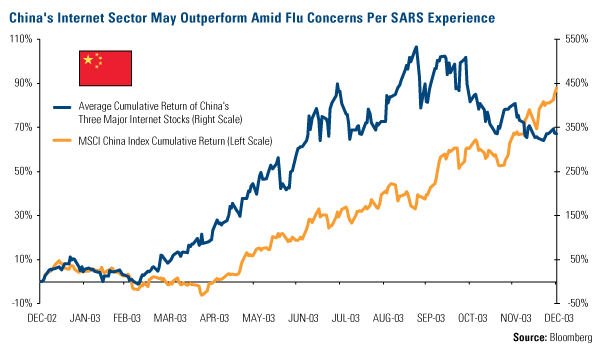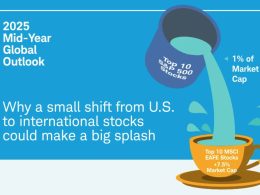Emerging Markets Radar (April 15, 2013)
Strengths
- China’s March CPI was 2.1 percent year-over-year falling short of market expectations for 2.5 percent. The benign inflation number will allow China’s central bank, People’s Bank of China (PBOC), to stay on neutral monetary policy to support the government’s growth objective. PPI was down 1.9 percent, proving weaker industrial demand, further limiting the central bank’s ability to tighten the money supply.
- In March, China’s new bank loans were Rmb 1.06 trillion versus market expectation for Rmb 900 billion; and M2 money supply grew 15.7 percent versus market expectations for 14.6 percent. Total social financing grew Rmb 2.54 trillion versus the estimated increase of Rmb 1.81 trillion. Those money supply statistics showed a strong demand for credit and good liquidity in the system.
- China’s March passenger vehicle sales increased 17 percent year-over-year to 1.39 million units, showing robust consumption growth.
- H share stocks are traded at 8.75 times forward earning with 3.5 percent dividends yield, the cheapest valuation and highest yield among the markets in China’s neighboring countries.
- Mexico released very encouraging gross fixed investment numbers for the month of January. According to the National Institute of Statistics, gross asset fixed investment increased at a pace of 4.6 percent from last year, beating analysts’ expectations by 100 basis points. The greatest expanding subcategory was machinery and equipment which bodes well for bullishness in the construction sector for the remainder of the year.
Weaknesses
- China’s March exports grew 10 percent year-over-year, lower than consensus of 11.7 percent, while imports rose 14.1 percent, higher than market consensus of 6 percent, resulting in a trade deficit of $884 million. Nevertheless, both export and import growth accelerated for the first quarter, with exports up 18.4 percent and imports up 8.4 percent, logging in a trade surplus of $43.07 billion versus $220 million in the same period last year.
- Fitch ratings downgraded China’s long-term local currency IDR rating to “A+” from “AA-“, with a stable outlook. Fitch cited five reasons for the downgrade, including fast credit expansion, proliferation of shadow banking, local government debt, lower fiscal revenue base versus other A-rated peers, and less track record on inflation management versus same peers. Investors in Hong Kong and China had largely ignored the downgrading event since those reasons are debatable.
- The Philippines’ February exports dropped by 15.6 percent versus the consensus decrease of 4.8 percent, which saw broad-based external demand weakness.
- The Monetary Policy Committee (MPC) of the Bank of Korea (BOK) kept its policy rate on hold at 2.75 percent, while the market had expected a rate cut by 25 basis points. The MPC, however, increased a policy lending window earmarked for small and medium sized companies from 9 trillion won to 12 trillion won and cut its base rate from 1.25 percent to as much as 0.5 percent. BOK also lowered its 2013 GDP growth forecast to 2.6 percent from 2.8 percent released in January, but the market expects an upside from the lowered forecast.
- Malaysia saw its February industrial production fall 4.5 percent below the consensus decrease of 2.5 percent, mostly due to shortened working days during Chinese New Year holiday.
- Bank Indonesia, the central bank, kept its policy rate unchanged at 5.75 percent, but lowered GDP forecast to 6.2 – 6.6 percent from the previous range of 6.3 -6.8 percent. The risk is fuel price measures, which can inflate consumer goods prices if subsidies are removed.
- Brazilian news continues to show deterioration in the overall economic environment. Just this week the balance of trade started showing signs of declining exports on the back of sluggish global economic growth. The decline in inflation for the month of March relative to February was not enough to prevent the CPI to breach the annualized 6.5 percent tolerance threshold, and UBS reported it estimates first quarter GDP growth to disappoint by growing roughly at half the pace of its already conservative 1.4 percent original estimates.
Opportunities
- As shown in the graph, the internet sector outperformed during the SARS period in 2003. After the SARS pandemic, the overall market rebounded and ended the year much higher. The current bird flu outbreak seemed well under control in the last couple of weeks, and social order in China is as normal as before.
- This Sunday, April 14, will mark the first time in 20 years that a presidential election in Venezuela will not have Hugo Chavez as a candidate. The consensus among local political analysts is that interim President Nicolas Maduro will win the elections by campaigning on Chavez’s platform. Despite the fact that the majority of the polls show Maduro will outvote opposition leader Henrique Capriles by a comfortable margin, we believe there is an opportunity for the opposition to narrow the 11-point gap of last year’s elections. A narrower win by the “chavismo” could lead to Maduro softening his party’s critical and debasing stance towards the opposition.
- Odds on Macau gaming revenue are rising as credit rating service Fitch raised its outlook, the latest in a string of upbeat reports on the Chinese gambling enclave. Fitch now expects Macau gambling revenue to rise 11.5 percent in 2013, up from its prior 8 percent forecast. Macau officials recently said gambling revenue jumped 25 percent in March, to nearly $4 billion, a new monthly record.
Threats
- For China, monetary policy directions are determined by inflation expectation and economic growth maintenance. Presently, neither of the two factors seems to cause any policy threat on the equity market, but other risk management measures in financial market, such as wealth management product regulations, could cause some short-term market volatility.
- Bank Indonesia may raise its benchmark some time over the year since CPI is threatened by trade deficit.
- The Peruvian government continues to do “whatever it takes” to tame a potential appreciation of its currency, the New Sol. This week, and for the third consecutive time this year, the central bank allowed an increase in pension funds’ cap on foreign investment. The measure, now at 36 percent after the last lift, is far above the 10.5 percent of 2006. While we welcome the move to allow greater investment flexibility, the estimated $1.7 billion of potential outflows estimated by Deutsche Bank could pose a threat to the already underperforming Peruvian stock market, and to the rallying local corporate bond market.













